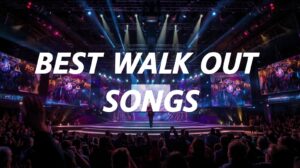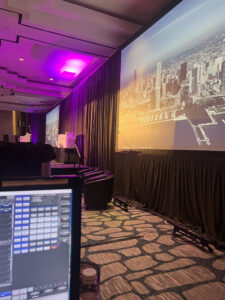The idea of running a virtual trade show is smart, but it takes more than just establishing a platform to succeed. The key to gathering a big and active following is to have a clear promotional strategy, which integrates digital marketing, social media presence, and email campaigns. It is not enough to create an event. A virtual trade show needs to be well-marketed to increase awareness and registrations and maximize attendance.
This guide will take you through tested and tried steps that will help you promote your virtual trade shows and get more attendees, reach your target audience, and grow your brand following on the internet. But before following any of the processes to promote shows, make sure you’re using the right virtual trade show platforms to deliver a smooth and engaging experience worth promoting.
Here are 10 ways to promote virtual trade shows and get more attendees.
1. Plan Early and Set Clear Goals
Choose the Ideal Date and Timeline
Choose a date that will not conflict with industry events and holidays. Allow yourself a minimum of 6 and preferably 8 weeks of promotion. This duration allows your audience time to learn about the event and create room in their diaries.
Define Specific, Measurable Objectives
Set clear goals from the beginning. Decide what you want more: leads, product demos, partnerships, or awareness. Make the numbers specific. For example, aim for “500 signups” instead of “lots of attendees.”
Identify and Understand Your Target Audience
You have to understand what kind of person you are talking to. Segment your audience based on job titles, industry, challenges, and interests. The narrower your audience profile, the more you can target your messages.
Assign Tasks and Set Deadlines
Do not attempt to be everything to everybody. Make a checklist. Divide up content, emails, ads, and outreach responsibilities. Place a time limit on every activity to avoid losing anything.
2. Create a High-Converting Event Landing Page
Showcase Key Event Details Clearly
Your landing page must look into answering a single, large question: Why attend? Put the name of the event, the time, the list of speakers, what is being served, and to whom, all above the fold.
Use strong calls to action (CTAs)
Keep your CTA straightforward and active. The call-to-action buttons are more effective when they say, “Reserve Your Spot” or “Join Free Now” instead of using a generic button such as “Submit.”
Optimize for Mobile and Fast Loading
Browsing is done on phones. Ensure your landing page loads fast and looks clean on mobile. Page clutter or slow pages will cost you attendance.
Include Registration and Contact Options
Embed the registration form directly on the page. When a person needs to ask a question, provide a method of contacting you without having a problem finding it, such as a support email address or a live chat icon.
3. Utilize Email Marketing Effectively
Build or Segment Your Email List
Use past event lists, newsletter subscribers, or CRM contacts. Segment based on interest or behavior, so messages feel more personal and relevant.
Craft Engaging and Benefit-Driven Messages
Be value-oriented. Put the emphasis on what the attendee will receive: knowledge, networking, tools, or resources. Avoid information overload. Make it concise and benefit-driven.
Schedule Multiple Email Touchpoints
A single email is not sufficient. Design a series: announcement, speaker introduction, reminder, final call, and post-registration communications. Use automation to save time.
Use Personalization and Clear CTAs
Add the recipient’s name. Mention sessions or topics they may like. A personal tone increases open and click rates. Always end with a strong CTA.
4. Leverage Social Media Platforms
Select the Right Channels for Your Audience
Publish where your readers already are. LinkedIn is effective for B2B. Broader consumer groups can be served better through Instagram and Facebook.
Create and Promote a Custom Event Hashtag
Make an easy-to-use short hashtag. It will assist you in monitoring mentions and prompting discussions about your event.
Share Regular Updates and Interactive Content
Update the post at least 2 or 3 times per week. Share videos, polls, countdowns, or Ask Me Anything posts to increase involvement.
Engage in Relevant Groups and Communities
Become a member of Facebook groups, LinkedIn groups, or other online forums on your topic. Add value first, then casually drop the mention of your event.
5. Collaborate with Influencers and Partners
Identify Relevant Industry Influencers and Organizations
Identify professionals, bloggers, or thought leaders in your field. Seek the ones that address your dream audience and have a following.
Offer Mutual Benefits and Incentives
Tell them what they will get. They can be encouraged to advertise your trade show through exposure, affiliate commissions, or by giving them free access to the events.
Provide Ready-to-Use Promotional Materials
Do not rely on other people to make content. Provide them with plug-and-play graphics, captions, and links. The simpler it becomes, the more they will tell.
Maintain Clear and Timely Communication
Make communication brief, precise, and frequent. A follow-up shortly can be used to avoid missed deadlines or misunderstandings.
6. Invest in Targeted Paid Advertising
Choose Platforms Based on Audience Demographics
Facebook Ads, LinkedIn Ads, and Google Display all work well—it just depends on who you’re trying to target. Take advantage of the wisdom of previous campaigns (if available).
Design Clear, Benefit-Focused Ads
Summarize the value in several words. Short headline, impactful visuals, and a crisp message with a strong call to action encouraging viewers to register.
Set and Monitor Campaign Budgets and Performance
Don’t create and leave. Track CTRs, conversions, and costs. Stop non-performing ads before they eat up your budget and redirect to the performing ads.
Retarget Interested Visitors for Higher Conversions
Create retargeting campaigns for the visitors who did not sign up on the 1st attempt. These hot leads have higher chances of conversion.
7. Offer Incentives to Boost Registrations
Early Bird Discounts and Special Offers
Provide a limited-time discount or complimentary access to the first 100 sign-ups. Individuals react to early savings.
Contests, Giveaways, and Exclusive Content Access
Host a competition on social media. Provide free tickets or VIP admissions. Or offer a resource (such as a PDF guide) to everyone who registers early.
Use Scarcity and Urgency to Encourage Sign-Ups
Incite action by including phrases such as “Seats Limited” or “Only 2 Days Left” to encourage users who are on the fence.
8. Host Pre-Event Webinars and Q&A Sessions
Build Anticipation and Engagement
An interest can be created by a brief webinar before the actual event. Post previews, recaps, or incentives to be there.
Introduce Key Speakers or Topics
Allow a speaker to introduce his/her session. This lends credibility and provides the audience with a sampler of the value they will receive.
Collect Registrations and Contact Information
Make people sign up even for the pre-event session. This will assist you in expanding your list and also in determining highly engaged prospects.
9. Send Timely Reminders and Simplify Access
Schedule Reminder Emails Before the Event
Remind them 3 days, 1 day, and 1 hour before the event. Add the title of the event, time, and access link.
Provide Clear Joining Instructions
Describe the process of joining, step by step. Does it need an app or a login? Let people know this at the beginning so they can be prepared.
Offer Technical Support Contacts
Not everyone is tech-savvy. Give a quick way to reach support in case of access issues.
10. Follow Up and Nurture Attendees Post-Event
Send thank-you emails and surveys
Immediately after the event, acknowledge your attendees. Request feedback in a brief survey to determine what did and did not work.
Share Event Recordings and Additional Resources
Provide access to recordings of sessions. Include slides, tools, or bonus material to provide additional value.
Gather Feedback to Improve Future Events
Examine the feedback. Look at the data. Find out where people fell off or remained active. Apply this to your next event strategy.
Want More People at Your Next Virtual Trade Show?
Promoting your virtual trade show is essential. The use of email, social posts, ads, and partner outreach ensures people know, remember, and plan to attend. Highlight what makes your event stand out, like speakers, demos, or giveaways, and follow up with reminders and sneak peeks to build excitement.
At Huview Productions, an audiovisual production company in Atlanta, we don’t just provide Expert AV Productions for Virtual Trade Shows in Atlanta, we also make sure they’re seen. From branded graphics and email campaigns to live streaming and on-screen visuals, we deliver the full package to attract and keep your audience.
Ready to boost your reach and fill your virtual event with engaged attendees? Connect with us to plan every detail and maximize attendance.







